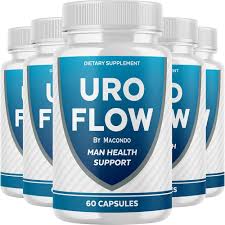When it comes to urinary health, one vital yet often overlooked diagnostic tool is uroflow metry, commonly called a “uroflow” test. Uroflowmetry is a non-invasive procedure that helps physicians understand how well your bladder and urethra are working by measuring how quickly and how much urine you pass. Though simple, this test offers critical insights into potential urinary tract abnormalities, and it’s often the first step in the evaluation of voiding problems.
What Is Uroflowmetry?
Uroflowmetry measures urine flow rate over time — specifically, how much urine you release, how fast it comes out, and how long the process takes. With this test, you urinate into a special funnel or toilet-like device linked to an electronic machine, which records flow parameters such as maximum flow rate (Qmax), average flow, and voiding duration.
Because the test is purely observational and involves natural urination, there’s no discomfort — no needles, no incisions, just normal voiding pattern captured and analyzed.
Urinary problems are more common than most people realize, especially among adults above the age of 35. Weak urine flow, frequent bathroom visits, nighttime urination, or discomfort while urinating can affect sleep, energy, and confidence. Many people ignore these symptoms until they start affecting daily life, but early support can make a huge difference.
That’s why dietary supplements like Uroflow have become popular — they offer natural, plant-based support for urinary flow, prostate comfort, and bladder health.
In this blog, we’ll explore what Uroflow is, how it works, who needs it, and why it is becoming a trusted choice for men and women facing urinary discomfort.
Why Is the Uroflow Test Performed?
Doctors typically recommend uroflowmetry for patients who experience symptoms like:
-
Weak or slow urine stream
-
Difficulty starting urination
-
Frequent urination or feeling that the bladder hasn’t emptied completely
-
Urinary incontinence or leakage
-
Suspected bladder outlet obstruction or prostate problems in men
These symptoms might point to underlying conditions such as benign prostatic hyperplasia (BPH), urethral strictures, neurogenic bladder dysfunction, or other lower urinary tract issues.
By analyzing flow rate and voiding pattern, uroflowmetry helps clinicians identify whether there is a blockage, a weak bladder muscle, or dysfunctional sphincter control.
What Is Uroflow?
Uroflow is a natural dietary supplement formulated to support healthy urinary flow, reduce bathroom urgency, and improve bladder strength. It is made with herbal extracts, minerals, and plant-based nutrients that have traditionally been used to support prostate function, kidney health, and urinary tract balance.
Unlike medications, Uroflow is not designed to diagnose or cure a disease — instead, it provides nutritional support that helps your body maintain a healthy urinary system.
How to Prepare for a Uroflow Test
To ensure accurate results, some preparation is needed:
-
Come With a Full Bladder
You should neither urinate just before the test nor arrive with an empty bladder. Drinking fluids beforehand helps make sure there’s enough urine to measure. -
Avoid Bathroom Tissue
During the test, do not place toilet paper or tissue into the measuring device — doing so can throw off the readings. -
Medication Disclosure
Inform your doctor about any medicines, vitamins, herbs, or supplements you’re taking. Some drugs might affect bladder function. -
Urinate Normally
When performing the test, don’t try to force or vary your usual stream. Urinate as you typically would so that the flow measurements reflect your natural voiding behavior. What Happens During the Procedure?
-
You’ll be taken to a private restroom equipped with a uroflowmeter.
-
You urinate into a funnel or special toilet seat connected to the device.
-
As you void, the machine records the volume, flow rate, and time taken.
-
Once you’re done, the test typically lasts only a few minutes, and the machine immediately generates a flow curve.
-
Afterward, your doctor will interpret the results in the context of your symptoms.
Interpreting the Results
Doctors analyze several parameters from the uroflow test:
-
Qmax (Peak Flow Rate): The highest flow rate you achieve during urination.
-
Average Flow Rate: The mean flow over the voided volume.
-
Voiding Time: Total time taken to urinate.
-
Flow Pattern (Curve): The shape of your flow graph helps determine whether you have normal, obstructed, or irregular flow.
Normal vs Abnormal Readings:
-
A low or slow peak flow may suggest an obstruction (like an enlarged prostate, urethral narrowing), or weak bladder muscle strength.
-
An abnormally high flow might indicate weak sphincter muscles — potentially pointing to urinary incontinence issues.
-
Flow patterns (like plateau or intermittent flow) offer diagnostic clues beyond just numbers. Advanced versions of uroflowmetry also examine acceleration or use machine learning to interpret nuanced flow curves for more accurate diagnosis.
Uroflowmetry is generally very safe: it’s noninvasive and doesn’t involve radiation or invasive probes. However, there are several things to keep in mind:
-
Variability: Flow rates vary from day to day, depending on how full your bladder is, your posture, and even location.
-
Single Test Limitations: One test snapshot might not pick up intermittent or mild issues, so doctors sometimes ask for repeated uroflow tests or additional urodynamic assessments.
-
Interpretation Complexity: Flow data must always be correlated with symptoms, physical exam, and possibly further testing — uroflow alone may not give a definitive diagnosis.
Who Should Consider Uroflow Testing?
Uroflowmetry is most useful for:
-
Men with suspected prostate enlargement or other obstructions.
-
Patients with urinary incontinence — to assess if flow issues or sphincter dysfunction might be contributing.
-
Individuals with neurological diseases (like Parkinson’s or spinal cord injury) who might have lower urinary tract symptoms (LUTS).
-
Children with voiding dysfunction — pediatric uroflow tests are common for evaluating bladder control in younger patients.
Advances and Future Directions
Uroflowmetry continues to evolve. Recent research explores new diagnostic metrics beyond just peak flow and voiding time. These include:
-
Flow Indices & Acceleration: Tracking how quickly urine flow builds up during voiding.
-
Uroflow + Electromyography (EMG): Combining flow data with muscle activity data of the pelvic floor to understand coordination and dysfunction.
-
AI and Nomograms: Using artificial intelligence and statistical models to interpret uroflow data more accurately, adjusting for factors like age, sex, and posture.
-
Home Uroflow Devices: Innovations like at-home uroflow meters paired with smartphone apps allow patients to record flow in a familiar, stress-free setting, giving more realistic and multiple-day data to physicians.
Real-Life Patient Insights
Many patients who undergo uroflow testing find it less intimidating than they expected. Because it’s non-invasive and straightforward, the test provides a clearer picture of bladder function without major discomfort.
From online patient forums, you’ll often see discussions like:
“Got my results… Max flow was decent but not spectacular. Doc says more tests might help.”
“After urethroplasty, my Qmax improved from my first test — feels good to see progress.”
“I track my flow at home using an app — helps me and my urologist spot patterns over days.”
These insights reflect how uroflowmetry can be personally empowering — especially when combined with long-term monitoring.
How Uroflow Works
Uroflow works through a blend of herbs and natural ingredients that support the urinary tract, promote healthy flow, and relax the bladder muscles. While every supplement brand has its own formula, most Uroflow-style supplements work on three main factors:
1. Supports Normal Urine Flow
Some users struggle with slow, weak, or interrupted flow. Uroflow contains natural compounds that help support smooth and steady flow for better comfort.
2. Promotes Bladder Strength & Control
A weak bladder or irritated urinary tract can cause frequent urges or nighttime urination. Uroflow helps soothe the urinary tract and strengthen bladder function.
3. Supports Prostate Health in Men
For men, prostate enlargement can cause pressure on the urinary tract, leading to slow flow and difficulty emptying the bladder. Herbal ingredients in Uroflow help support normal prostate size and function.
4. Maintains Urinary Tract Cleanliness
Herbs and antioxidants in the supplement help keep the urinary tract clean and balanced, reducing discomfort during urination.
Key Ingredients Often Found in Uroflow Supplements
Although formulations vary by brand, most Uroflow-type supplements contain:
✔ Saw Palmetto
Known for supporting prostate health and reducing urinary discomfort in men.
✔ Cranberry Extract
Helps maintain urinary tract cleanliness and supports UTI protection.
✔ Pumpkin Seed Extract
Used traditionally to support bladder strength and reduce nighttime urination.
✔ Beta-Sitosterol
A plant compound known to support healthy prostate size and smooth urine flow.
✔ Lycopene & Zinc
Important nutrients for male reproductive and prostate health.
✔ Hibiscus & Other Herbal Blends
Help soothe bladder irritation and promote a balanced urinary system.
Benefits of Uroflow Supplement
1. Improves Urinary Flow
Regular use helps support smoother, stronger, and more consistent urine flow.
2. Reduces Frequent Bathroom Visits
Helps the bladder hold urine comfortably, reducing the need to urinate again and again.
3. Supports Prostate Function
Especially helpful for men over 40 who may experience prostate-related urinary issues.
4. Promotes Nighttime Comfort
Waking up multiple times at night disrupts sleep. Uroflow helps reduce nighttime urination for better rest.
5. Supports Kidney & Urinary Tract Health
Herbal ingredients help maintain kidney filtration and urinary tract cleanliness.
6. Natural & Plant-Based Formula
Free from synthetic chemicals, making it a safer alternative for long-term use.
Who Should Use Uroflow?
Uroflow may be helpful for people who experience:
-
Weak or slow urine stream
-
Frequent urination
-
Nighttime urination (Nocturia)
-
Difficulty starting urination
-
Feeling of incomplete emptying
-
Mild burning or discomfort due to urinary imbalance
-
Prostate-related issues
-
Low bladder control
Both men and women can use Uroflow, although men often use it for prostate support.
How to Use Uroflow
Usage instructions may vary, but most supplements recommend:
-
1 or 2 capsules per day
-
With a meal
-
Taken consistently for at least 4–6 weeks for best results
It is always best to follow the instructions given on the product label or consult a healthcare professional.
Why Uroflow Is Gaining Popularity
✔ Natural Ingredients
People are shifting towards plant-based wellness solutions instead of harsh medicines.
✔ Easy Daily Support
Just a couple of capsules daily provide convenient support.
✔ Non-Habit Forming
Safe for long-term daily use.
✔ Works for Overall Urinary Wellness
Not just for one symptom — it supports the entire urinary system.
✔ Trusted by Aging Adults
Helps adults over 40 maintain healthy flow and bladder comfort.
Precautions & Side Notes
-
Uroflow is a dietary supplement, not a medical cure.
-
Not recommended for pregnant or breastfeeding women unless advised.
-
If symptoms are severe or persistent, consult a doctor.
-
People with kidney issues should speak to a healthcare professional before use.
-
Always buy from reliable, original sources to avoid duplicates.
FAQs About Uroflow Supplement
Q1: How long does Uroflow take to show results?
Most users feel improvement within 2–4 weeks, but consistent use for at least 60–90 days gives better results.
Q2: Is Uroflow safe for long-term use?
Yes, it’s made with natural ingredients and is safe for regular use unless your doctor advises otherwise.
Q3: Can women take Uroflow?
Absolutely. Although many men use it for prostate support, women benefit from its bladder and urinary tract support ingredients.
Q4: Does it help with nighttime urination?
Yes, many ingredients in Uroflow help reduce nocturia by strengthening the bladder and supporting healthy urination patterns.
Q5: Does Uroflow require a prescription?
No. It is an over-the-counter dietary supplement.
Conclusion
Urinary discomfort can affect sleep, confidence, social life, and overall health — but natural support can make a big difference. Uroflow supplement offers a plant-based, safe, and effective way to improve urinary flow, reduce frequent urination, and support prostate and bladder health.
With daily use, Uroflow strengthens the urinary system, helps maintain bladder comfort, and supports better quality of life — naturally and gently.
 :
https://www.uroflov.com/
:
https://www.uroflov.com/



